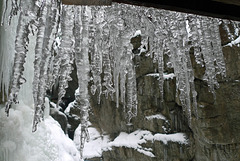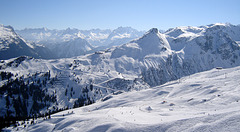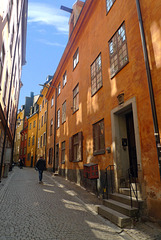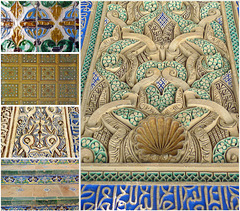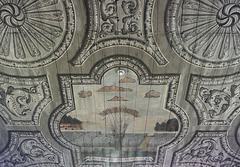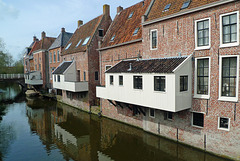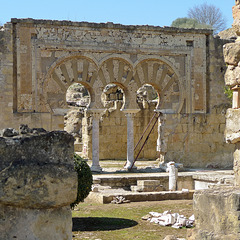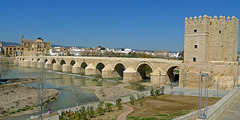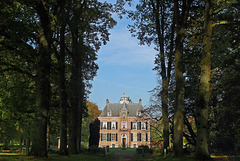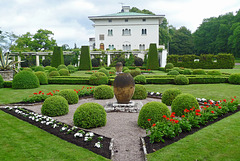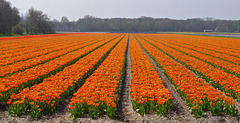Jaap van 't Veen's photos
Germany - Oberstdorf, Breitachklamm
| |
|
|
|
The river Breitach has cut a deep canyon into the rocks of the Bavarian Alps, almost on the border between Austria and Germany, just south of Oberstdorf. The most interesting part of the gorge is a couple of hundred meters long. On some places the steep walls are more than 100 meters high, where only very few spots ever get the sunlight.
There is a path along the river, which on the narrowest places has been cut into the steep wall of the canyon. During a hike in the winter we were really surprised by the beauty of this ‘winter wonderland’ with snow, glittering icicles, ice curtains and frozen waterfalls.
Austria - St. Gallenkirch, Silvretta Montafon
| |
|
|
|
Part of the ski region Silvretta Montafon (former Silvretta Nova), with its 140 km's of ski runs it is one of the biggest areas of Austria.
Picture: looking towards 'Nova Stoba' from 'Valisera Hüsli'
Nederland - Gouda, Molen ’t Slot
| |
|
|
|
The Molen ‘t Slot (Mill on the Castle) is situated near the old town centre of Gouda and along the river Holland IJssel. The mill stands proudly on his spot since the year of 1832, replacing an earlier octagonal mill which was destroyed in 1831 by fire. It is however the third mill at this spot.
The history goes even further back. The first mill was built (1581) on the foundations of a castle. The name ‘t Slot refers to the castle of the 'Heeren van ter Gouw', which was demolished in1577.
Flour mill 't Slot is a so called smock mill. A smock mill is a type of windmill that consists of a sloping, horizontally weather boarded tower. It is topped with a cap that rotates to bring the sails into the wind.
The mill is open for visitors when the sails are turning.
Sweden - Stockholm, Gamla Stan
| |
|
|
|
‘Gamla Stan’ (Old Town) is Stockholm’s medieval city centre, where Stockholm was founded in the year of 1252 by Birger Jarl. It is the historical heart of Stockholm and consists of the three islands Stadsholmen’, Riddarholmen and Helgeandsholmen. Helgeandsholmen
When people mention ‘Gamla Stan’, they usually think of Stadsholmen, the largest of the three. Until the 19th century it was simply called ‘Staden’ (City). Later it became known as the ‘Staden mellan broarna’ (City between the bridges). Since 1980 it has been called Gamla Stan.
Although ‘Gam la Stan’ dates from the 13th century, most of its buildings are from the 17- and 1800s. It is a labyrinth of narrow winding cobblestone streets, alleyways, beautifully pastel coloured town houses and squares with a German influenced architecture.
Some of the main (shopping) streets can be very overcrowded by tourists, but once you enter the side streets it feels like you are walking back in time.
Pictures:
Main picture - Prästgatan (Priest’s Street) ran just inside the former defense wall; it is considered being one of the most beautiful streets of ‘Gamla Stan’.
PiP 1: Brända Tomten, one of the most scenic squares with a triangular shape surrounded by picturesque houses and a chestnut tree in the middle.
PiP 2: Kindstugatan, one of the quiet side streets
PiP 3: Stortorget, the main square of Gamla Stan
Spain - Sevilla, Real Alcázar
| |
|
|
|
The Real Alcázar de Sevilla (Royal Alcázar of Seville): details of the sumptuous decorations.
Nederland - Apeldoorn, Wenumse Enk
| |
|
|
|
Wenum is more of a hamlet, coming into being on a east-west ridge of sand. The landscape around Wenum is characterized by streams, fields and meadows close to each other. This small scale landscape changes gradually eastwards into an open agricultural landscape.
Characteristic is the Wenumse Enk ('upland field’), a large spherical open field on the
sand ridge. Landmark of this Enk is the windmill ‘Oranjemolen’, also called ‘t Haasje’ (PiP).
Sweden - Västervik, S:ta Gertruds Kyrka
| |
|
|
|
S:ta Gertruds Kyrka (St. Gertrud’s Church) was built in the 1450’s after King Eric of Pomerania had ordered to move the town of Västervik from Gamleby to its current location. The city was destroyed in a battle in 1517 and inhabitants moved back to the old city. After King Gustav Vasa ordered them to move back, St. Gertrud’s Church was restored as a Lutheran church. It was once again destroyed in 1612 during the battle against Denmark. The church was renovated and enlarged until 1739.
Religious services were held in the church for nearly 500 years, until the last morning service was held there one Sunday in 1905. In the same year Västervik became a new church and St. Gertrud’s Church was used for grain storage during the First World War.
The church was re-established as a place of worship and in June 1933 St. Gertrud’s Church was re-inaugurated.
S:ta Gertruds Kyrka has many valuable items of furniture include like a pulpit and organ from 1743, which is considered to be one of Sweden’s most valuable, an altarpiece from the late 1600’s.
I was really impressed by some beautifully painted ceilings (main picture).
Spain - Sevilla, Real Alcázar
| |
|
|
|
The Real Alcázar de Sevilla (Royal Alcázar of Seville) was originally a Moorish fort. The palace is renowned as one of the most beautiful in Spain and is the oldest royal palace still in use in Europe, being used by King Juan Carlos when he visits Seville. The Real Alcazár was declared a World Heritage Site by UNESCO in 1987.
The Real Alcázar is built on the site of a Roman fort. The first Caliph of Andalusia ordered in the 10th century the construction of a castle, which later changed into a fortified palace. When Ferdinand III of Castile regained the city on the Moors in 1248, the Alcazar became the royal palace. Most of the present buildings were constructed after 1364, when King Pedro the Cruel commissioned the construction of a new palace
The numerous rooms, patios and halls vary in architectural styles in the mudejar style, but it has also islamic, gothic, renaissance, baroque and neoclassical elements.
Picture(s): the Patio de las Doncellas (Patio of the Maidens) is the main courtyard of the palace. This was the center of public life in the palace. The patio is named after the ladies (doncellas) who spent much of their time here.
Nederland - Appingedam, hanging kitchens
| |
|
|
|
Although almost nobody in the Netherlands would call Appingedam a city, it became its city rights already in the year of 1327. For sure the city is much older, but its date of origin is not known exactly. Together with the capital Groningen and Winschoten it is one of the three cities in the province of Groningen and located in the northern part of the Netherlands.
The name ‘Appingedam’ derived from two hamlets, ‘Appinge’ and ‘Damme’, which formed the later city; although others refer to the river ‘Apt’, in which a ‘dam’ was built.
Appingedam’s is quite famous for its hanging kitchens ('hangende keukens') and do attract many visitors. During the Golden Age the city had warehouses along the Damsterdiep. In the 17th century these warehouses were converted into private houses and due to a lack of space white painted kitchens were built over the water of the Damsterdiep. Also very practical, because the housewives could collect the water for cooking directly from the canal and after the washing up they threw the water out of the kitchen window back into the canal. Many of these houses along the Solwerderstraat are still used as private residences.
By far the best views of the ‘hanging kitchens’ are from the Vrouwenbrug (Women’s Bridge) over the Damsterdiep.
Sweden - Västervik
| |
|
|
|
Old water pump on a square, next to the St:a Gertruds Kyrka (St:a Gertruds church).
This old water pump was one of several public water pumps in Västervik that was used before the town council decided to build a modern water- and pluming system in order to improve health and hygiene. The new and modern system became in use in the year of 1906.
Most probably the water pump has been placed in the area before 1906, because there have been different public buildings nearby, like a school and a home for poor and elderly people, both built in the 19th century.
.
Spain - Córdoba, Medina Azahara
| |
|
|
|
Medina Azahara (in Arab: Madinat al-Zahra) was a city built in the year of 936 by Abd al-Rahman III and was named after the most beautiful and favorite woman from harem of the caliph. The city was the secular counterpart of the Mezquita in Córdoba.
Building material from Andalusia and North Africa was transported by 15.000 donkeys and 10.000 porters.
The city was built on three levels with a mosque, the home of the caliph and beautiful gardens. Halls and homes were embellished with alabaster, ivory, jasper and marble decorations.
The construction lasted forty years and during that time a complex of palaces, houses, kitchens, stables and bastions had been created. It had about 20.000 inhabitants, mostly military and court personnel with their families.
The city had just been completed when it was sacked by the Berbers in 1013 and razed to the ground.
In 1911 archaeologists started in Medina Azahara excavations. About one tenth of the walled city - with a total area of 112 hectares - is uncovered and partially reconstructed. They are still working on this place, which is considered being one of the most important medieval towns in Spain.
Main picture: an arche of ‘La Casa de la Alberca’ (House of the Pool)
PiP’s: some details of Medina Azahara
Nederland - Goes, Stadshaven
| |
|
|
|
The Stadshaven (City Harbour) is the former port of Goes, a city in the Dutch province of Zeeland, which was founded in the 10th century. The harbour is located in the town center and is connected to the Oosterschelde by the ‘Goese Sas’. The quay walls of the city harbour are a national monument.
The streets around the ‘Stadshaven’ (Kleine Kade, Turfkade and Bierkade) are lined with historic homes. The names of these streets refer to the historical significance of some products that were of great importance for the local economy: beer (= bier) and peat (=turf).
Nowadays the City Harbour of Goes focuses on yachts; the modern marina has seventy moorings.
Sweden - Småland, Strömsrum
| |
|
|
|
Strömsrum is one of these ‘in the middle of nowhere’ hamlets in Sweden’s countryside. It has just a few Falu red painted (farm)houses, and a beautiful mansion. Strömsrum is situated in a beautiful park landscape with old oak trees, which is bisected by the slow flowing river Alsterån.
Strömsrum slott - one of the oldest wooden mansions in the country - is dating back to the year of 1312 (see PiP).
Spain - Córdoba, Puente Romano
| |
|
|
|
The ‘Puente Romano’ (Roman bridge) of Córdoba is a bridge in the centre of the city. It was built by the Romans in the early 1st century BC across the Guadalquivir river.
The bridge was built under the command of the Roman emperor Augustus, in 918 the Moors extended the bridge to the state in which it appears today: 247 meters long and around 9 meters wide. ‘Puente Romano’ has – after the Islamic reconstruction - 16 arcades, which is one less than the original one.
The present structure is a medieval reconstruction; in the year of 2006 the bridge was extensively restored.
The ‘Roman Bridge’ connects the Torre de Calahorra with the old city centre with the Mezquita Cathedral/Mosque.
Nederland - Vorden, Den Bramel
| |
|
|
|
Den Bramel is one of the eight castles in and around the small village of Vorden. The history of Den Bramel is dating back to the year of 1396, when it was first mentioned. The present manor was built from 1720 – 1726 and a couple of times renovated and extended. The ‘castle’ is still privately owned and inhabited.
The so called Achtkastelenroute (Eight Castles Route) is a special bike route along the castles.
Sweden - Öland, Solliden slott
| |
|
|
|
Solliden slott (Solliden palace) is a fairly modest summer palace - better call it a villa - of the Swedish royal family. It was commissioned by Queen Victoria and built between 1903 and 1906. The Italian-style country house was designed by Torben Grut. The current Swedish king Carl Gustaf XVI inherited the palace in 1950 and is still used as a summer residence by the Swedish royal family.
The gardens of Solliden Palace are open to the public from May to September. Solliden Palace is located on the island of Öland, in southern Sweden, nearby Kalmar.
Spain - Córdoba, Mezquita
| |
|
|
|
The richly gilded ‘mihrab’ (prayer niche) is commonly considered being the juwel in the crown of the Mezquita. The mihrab - a horseshoe arch supported by two marble columns - is a masterpiece of architectural art, with geometric and flowing designs of plants and ornamented in stucco, gold leaf and tile.
The present mihrab came into being during the expansion of the mosque in the year of 961 !!
Traditionally the mihrab of a mosque faces in the direction of Mecca, which would be east-southeast, but the mihrab of the Mezquita in Córdoba unusually points south.
(during the expansion a number of domes with skylights over the area in front of the mihrab were built for extra light; didn’t make shooting perfect images easier for me)
Nederland - Bollenstreek
| |
|
|
|
Dune and Bulb Region (Duin- en Bollenstreek): Dutch as it can be with blooming orange tulips on one of the many fields nearby the famous 'De Keukenhof'.
Jump to top
- ipernity © 2007-2024
- Help & Contact
|
Club news
|
About ipernity
|
History |
ipernity Club & Prices |
Guide of good conduct
Donate | Group guidelines | Privacy policy | Terms of use | Statutes | In memoria -
Facebook
Twitter

